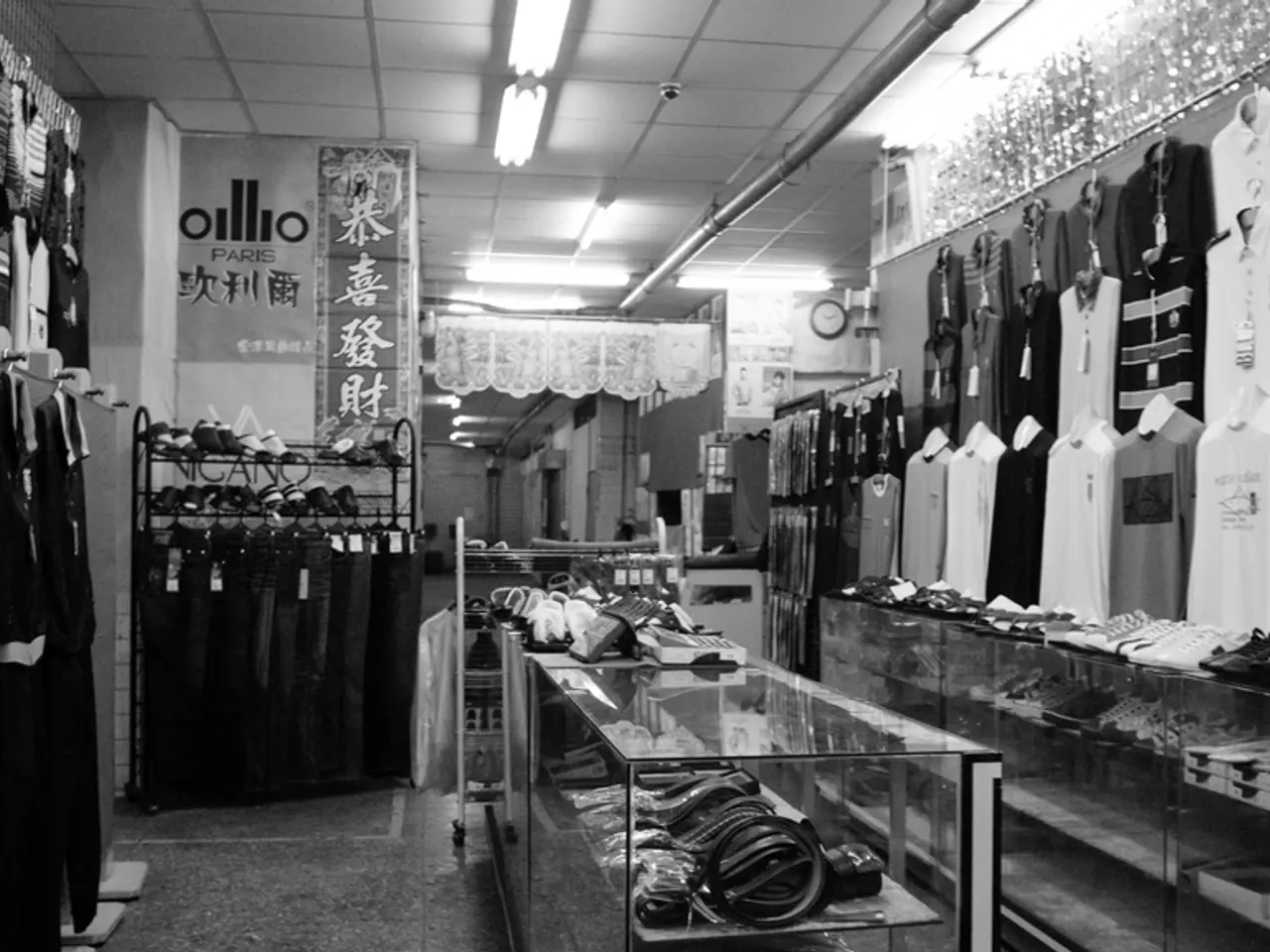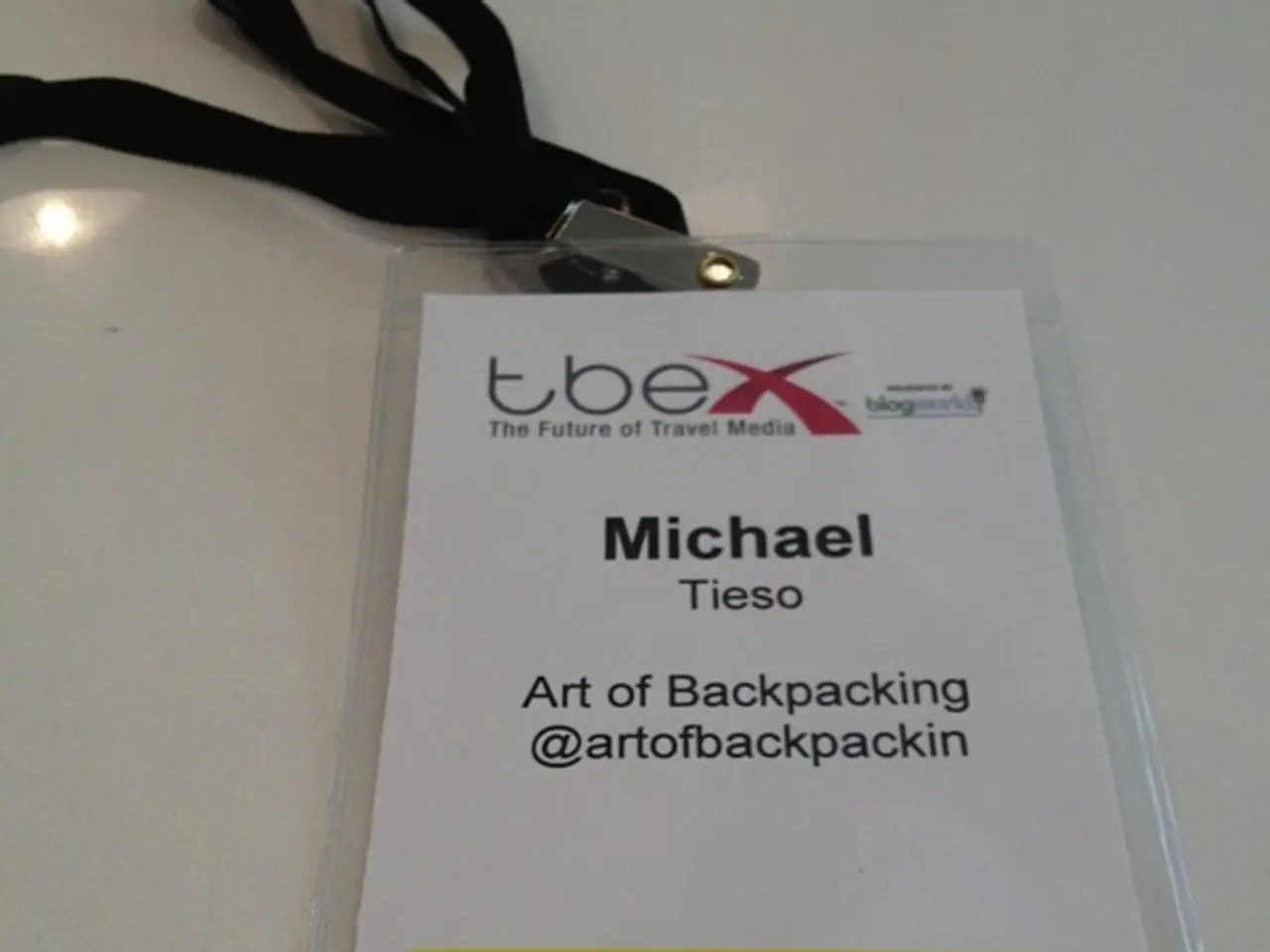Transformation of the Fashion Industry by Blockchain Technology
The fashion industry is embracing a new revolution with the integration of blockchain technology, promising transparency, sustainability, and efficiency. This innovative technology is transforming the way garments are produced, sold, and authenticated, offering numerous benefits to brands, consumers, and the environment.
Real-time Traceability and Transparency
Blockchain enables a transparent and real-time tracking system for garments, from the raw material fiber to the final product. This means that brands and consumers can view the origin, production timeline, and material history with ease [1].
Immutable Proof of Ethics and Authenticity
Data entered on the blockchain, such as ethical certifications or factory conditions, is locked and tamper-proof. This ensures the trustworthiness of supply chain information, preventing false claims [1].
Smart Contracts for Automatic Compliance
Self-executing contracts coded on blockchain enable automated payments and processes, ensuring that suppliers are paid only if ethical standards are met. This improves accountability and efficiency [1].
Digital Product Passports
Each fashion item can have a blockchain-based digital ID or NFT, storing verified supply chain data. Consumers can access this information via QR codes, aiding authentication, resale, and recycling efforts [1].
Improved Efficiency and Cost Reduction
By integrating multiple stakeholders on a centralized blockchain platform, the fashion supply chain reduces delays in verifying material origin and supply paths, streamlining operations and lowering costs [3].
Convenient Royalty and Intellectual Property Tracking
Blockchain provides an unalterable record of design creation, enabling tracking of trademarks, licensing, royalties, and sales. This benefits designers and brands with clear ownership and earnings [3].
Counterfeit Reduction and Secure Ownership of Digital/Digitalized Clothing
Blockchain certifies the uniqueness and ownership of digital garments, helping curb counterfeiting and supporting the emerging market of digital fashion assets [3].
These benefits collectively enhance trust, sustainability, efficiency, and innovation within the fashion industry’s complex and global supply chains. Brands like PANGAIA, Sheep Inc., Armedangels + Retraced, and ba&sh are already utilizing blockchain for these purposes [1].
A Synergy with Artificial Intelligence
When combined with AI, blockchain enables more precise demand forecasting, reducing overproduction and waste while boosting sustainability [2][4]. This technological synergy further supports responsible fashion by ensuring ethical labor practices and environmental standards are verifiable throughout the product lifecycle [2].
Pioneering the Future of Fashion
The first use of blockchain in fashion was during Shanghai Fashion Week 2016, and since then, brands such as Hugo Boss and LVMH have explored blockchain-based use cases for tracking their goods in the supply chain [3]. A fashion brand working to prove their worker welfare and authenticate the origin of their resell luxury items is considering blockchain development solutions [3].
The Emergence of Digital Clothing
Digital clothing is becoming increasingly popular in the fashion industry, with customers able to buy and digitally fit garments [3]. This trend is supported by blockchain technology, which makes it convenient to track royalty payments for designers, allowing them to develop an unchangeable proof of creation [3].
A Centralized Digital Platform
Blockchain brings the entire supply chain onto a centralized digital platform, saving weeks in identifying the material origin and supply line [3]. This technology can also be used for creating and tracking trademarks, licensing designs, and royalty programs or sales originating through these designs [3].
Understanding Blockchain App Development
When planning a blockchain app development process in the fashion industry, it's important to gather information from the right people, decide the level of trust, select a blockchain platform, and work on the app frontend and UI [3].
A Prime Technology and Trend
Blockchain is not just a key part of the changing fashion industry but also a prime technology and trend in the media and entertainment industry [3]. The Arianee protocol, for example, is a product certification and communication mode between the owner and the brand behind an item, using blockchain technology for every piece to receive a blockchain-based certificate [3].
In summary, blockchain technology's core advantages in the fashion industry are transparency, ethical verification, operational efficiency, anti-counterfeiting, intellectual property management, and enabling circular economy practices. When properly implemented by blockchain app developers, it can help the fashion industry validate their focus on sustainability and quality while maintaining margins and revenues.
- The integration of blockchain technology in the fashion industry can extend its benefits to finance, as it offers opportunities for automated, ethical, and secure payments through smart contracts.
- Furthermore, the adoption of blockchain technology in the fashion and beauty sectors can contribute to a more sustainable and transparent lifestyle, as it allows for the creation of digital product passports, tracing the origin and history of products, and promoting ethical consumption.




